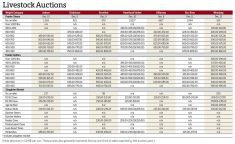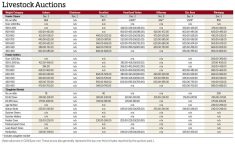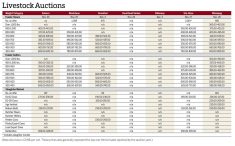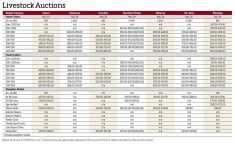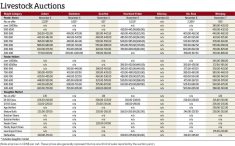Cattle sellers and auction sites across Manitoba were eager to return to business as usual during the week ended March 15.
After a major snowstorm the previous week cancelled some auctions and kept cattle at home, several sites made up for lost sales and saw many more animals go through the rings.
“In Gladstone, I think we had two weeks (worth) in one sale,” said Tyler Slawinski, auctioneer at Gladstone and Ashern Auction Marts. At the former, the sale on March 12 saw 2,353 cattle, including 622 sold via a video sale. Most sites had more than 1,000 cattle sold at regular sales.
Read Also
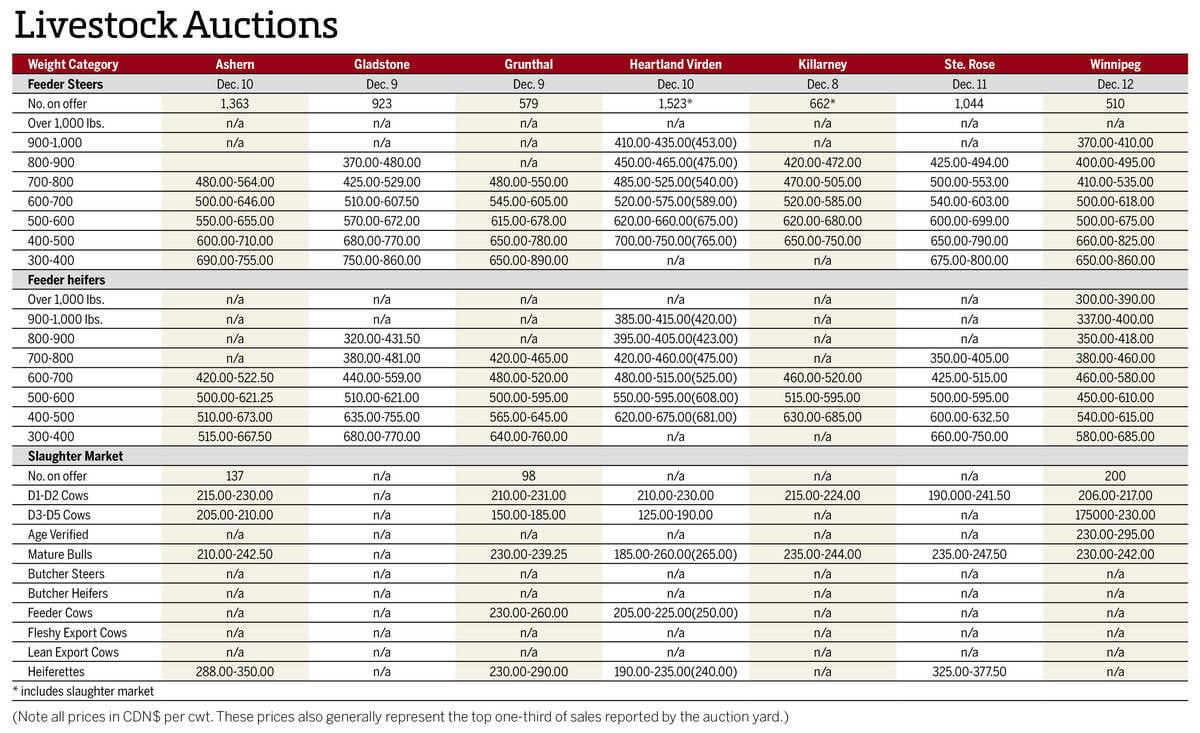
Manitoba cattle prices Dec. 16
Here’s what local farmers were getting paid last week for their cattle at Manitoba livestock auction marts; prices covering the week Dec. 8-12, 2025.
“(Gladstone) still probably would’ve had 1,300 or 1,400 cattle on the average (per week) …. We’re starting to see some bigger runs this time of year. Lots of guys want to maximize their dollars per head and a lot of backgrounding goes on with some of the bigger operations. I think those runs there are quite normal for this time of year,” Slawinski said.
Prices largely unseen since last October were also a major draw for cattle producers. Maximum prices for feeder steers ranged from $490 to $575 per hundredweight, compared to a range of $462 to $550 the previous week. High prices for heifers were between $400 and $462.50/cwt., more than the $380 to $452 range in the first week of March.
D1 and D2 slaughter cows were sold for $110 to $171/cwt., compared to the previous week’s range of $110 to $156. Mature bulls sold for up to $189/cwt. and the high price for heiferettes was $249/cwt.
Slawinski said steer calves are in high demand and other first-cut cattle are bringing premiums. Many cattle sold were going east due to high demand from Ontario and Quebec.
He added that lower feed prices are improving the bottom lines for cattle producers and they are glad to see profitability.
“Cattle producers are finally getting paid for their hard work and dedication to the industry and that’s driven the bred cow demand a lot stronger,” Slawinski said. “We’ve got to be getting close to having record prices for slaughter cows and bulls.”
At the Chicago Mercantile Exchange on March 14, the April live cattle contract hit its highest price since Oct. 20 at US$190.275/cwt. before settling lower at $186.950, a weekly loss of $1.775. The April feeder cattle contract closed at $251.175 on March 14 after dropping to $250.775, its lowest price since Feb. 16. The contract lost $5.125 for the week.
Slawinski anticipates prices will remain at current levels in the short term, but he is cautious.
“You never question a good thing, but anything can happen with the politics going on and with all the crisis going on in the world. We don’t know how much of an effect they’ll have on the markets, but I think we need to enjoy (these prices) while they’re here.”




